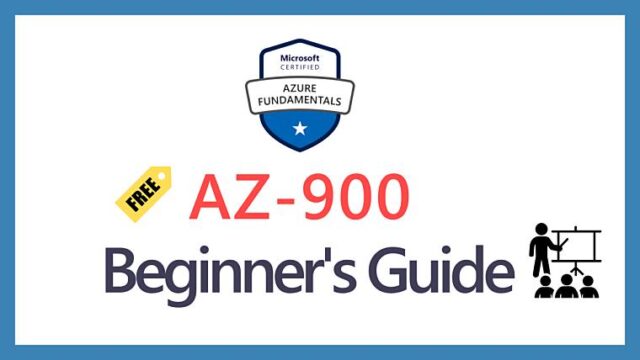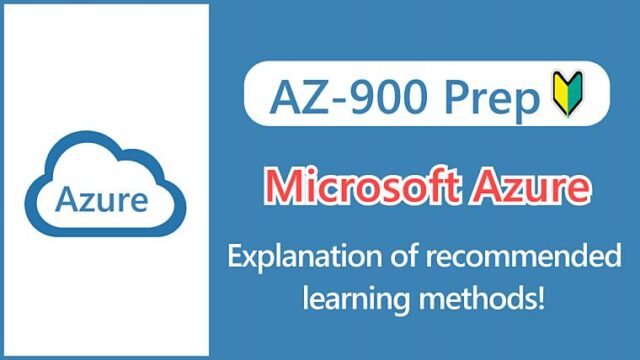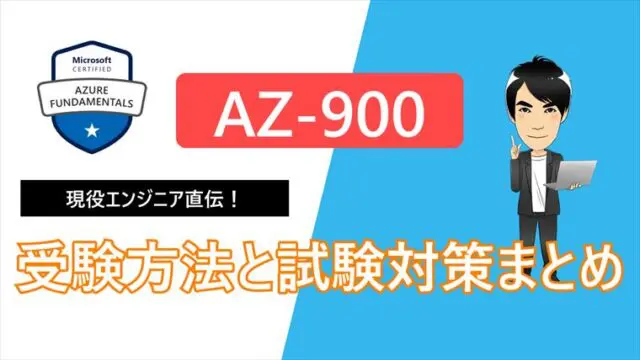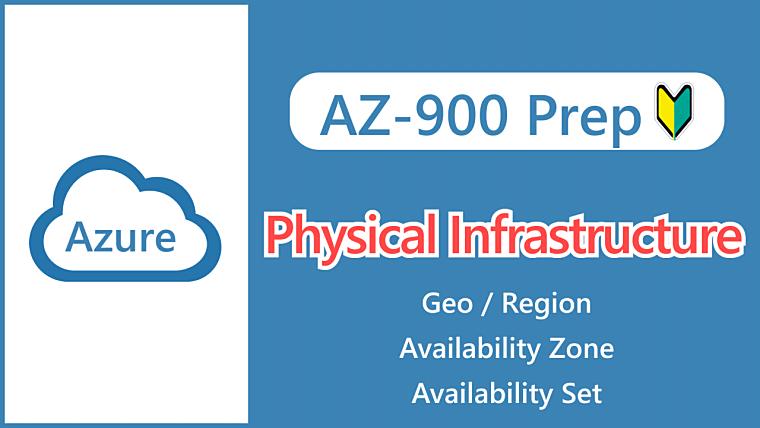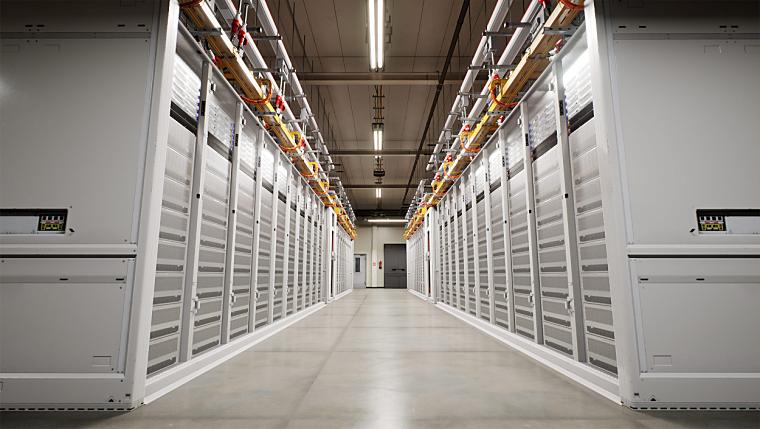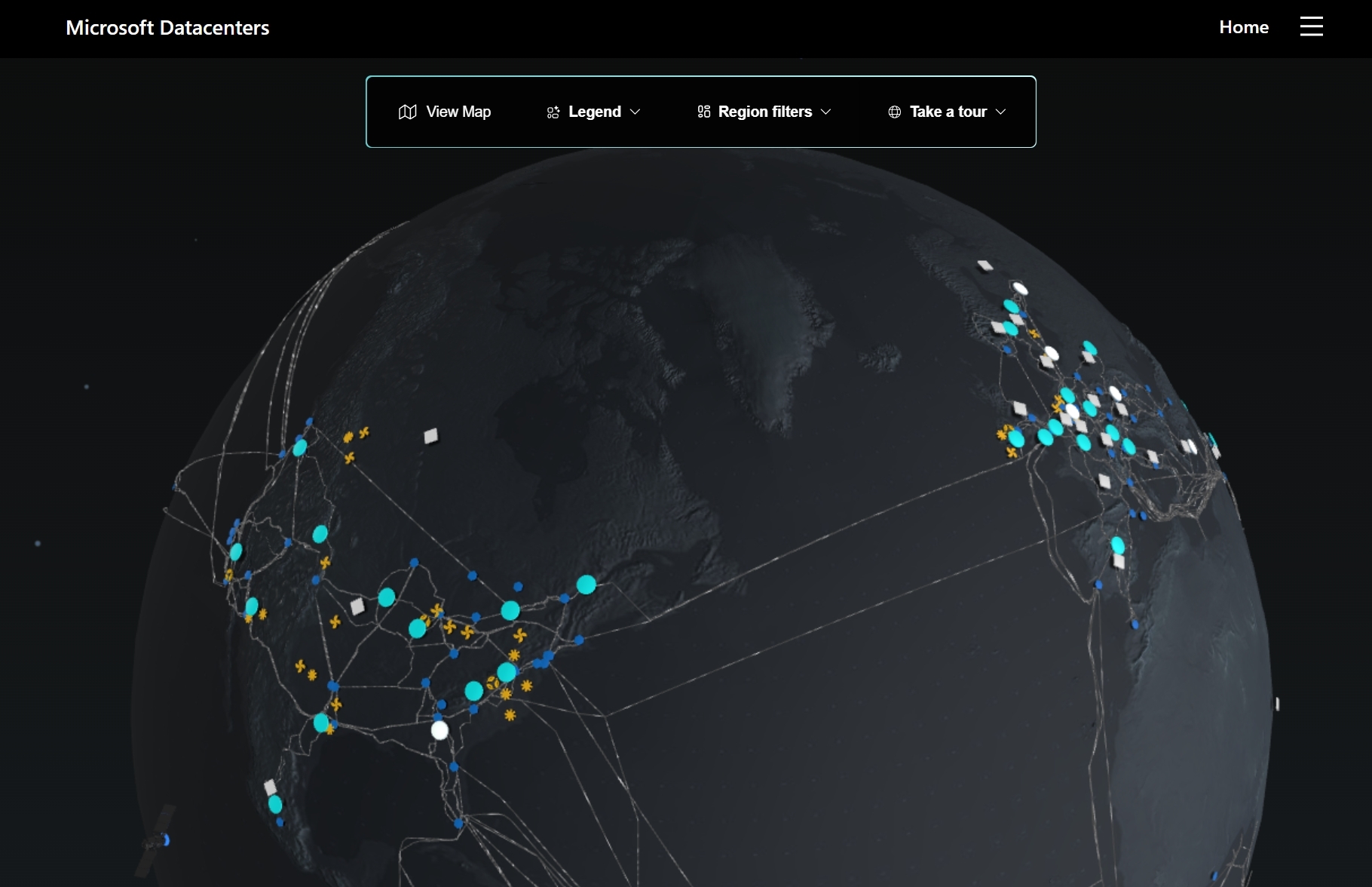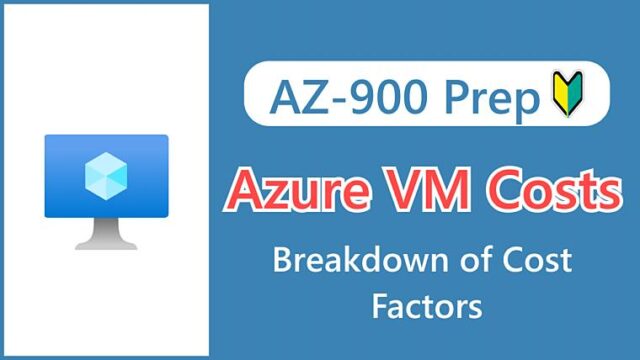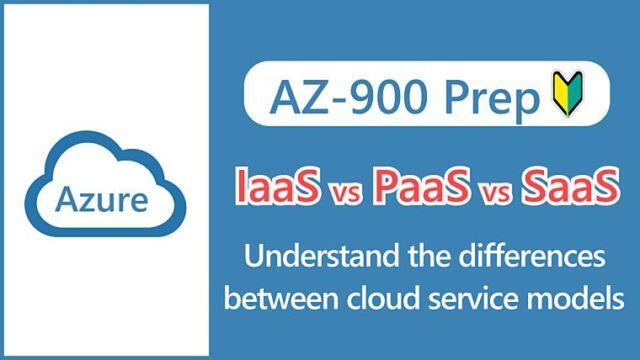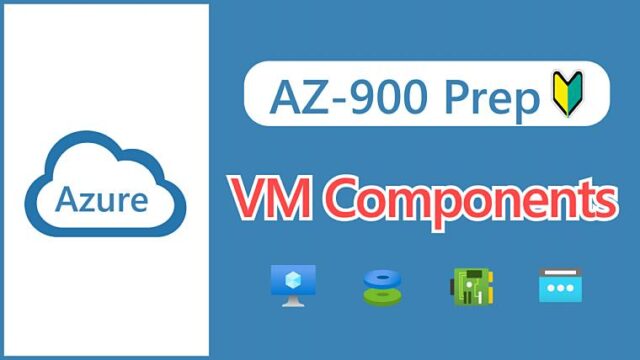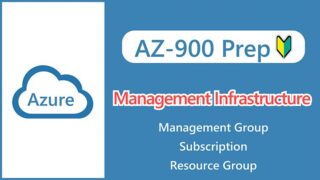Hi, I’m Makoto, a freelance engineer.
In this article, we will explain the terminology used in relation to Azure datacenters.
- Geographies
- Regions
- Region pairs
- Availability zones
- Availability sets
- Sovereign Regions
In addition to the meanings of the terms, we will also explain the key points for selecting a region and the differences in measures against failures. Please read to the end.
Let’s get started!
Servers and Datacenters
Servers for business use are generally installed in storage spaces called “server racks” from the perspective of maintainability and security protection.
The servers are fixed (racked) in a server rack, and the image is that they share power supplies and network switches (HUB).
Inside the datacenter, there are many of these server racks lined up.
Source: WE LIVE IN THE CLOUD
You can get an inside look at Microsoft’s server rooms and other facilities by taking a virtual datacenter tour. It gives you a realistic feel for what it’s like to visit a datacenter, so be sure to check it out.
Geographies and Regions
Azure datacenters are grouped according to geographic concepts such as geo and region. Let’s look at them in turn.
What is a Geography (geo)?
In most cases, geo refers to the name of a country.
Japan, China, and the United States are all examples of geos, but there are also geos that span multiple countries, such as Asia-Pacific and Europe.
A geo is a group of regions, as explained below. Although you are unlikely to be asked about the meaning of geo in AZ-900, it often appears in terms such as “geo-redundancy” and “geo-replication”, which refer to high availability through replication and synchronization.
What is a Region?
The word “region” refers to the geographic location of a datacenter.
As of 2024, there are more than 60 regions in Azure worldwide, and each region contains at least one datacenter. You could also say that it is a group of datacenters in a particular region.
Source: Explore Microsoft datacenters
There are two regions in Japan: Japan East and Japan West. The addresses of the datacenters are not disclosed, but the Japan East datacenters are located in Tokyo and Saitama, and the Japan West datacenters are located in Osaka. The datacenters within each region are connected by a low-latency private network.
When you create Azure resources such as virtual machines, you can choose which region to use, except for some globally scoped services.
What is a Region pair?
Each region is paired with another region in the same geo, and this is called a region pair.
The two regions that make up a pair are configured to be as far apart as possible, at least 300 miles, and by providing backup between regions, the impact of disasters and other regional failures is minimized, allowing services to continue.
In addition, planned maintenance for Azure is also performed on one side of each pair at a time, and is designed to not affect the other side at the same time.
In the case of Japan, the Japan East region and the Japan West region are paired. The pair cannot be specified by the user.
Note that region pairs are a measure against region-scale failures.
Tips for selecting a region
If you are using Azure in Japan, you will probably choose either the Japan East or the Japan West, but there are three key points to consider when choosing a region.
- Response time
- Price
- Available services
First of all, in terms of response time, in general, the closer the location is geographically, the faster the response time and the faster the service can be used.
For use within Japan, it is generally preferable for users in Western Japan to use the Japan West region and for users in Eastern Japan to use the Japan East region, but the points mentioned below are also important.
Next, in terms of price, the price is set differently for each region.
In Japan, there are some services that cost the same in both the East and the West, but for some services, the price is set higher in one region or the other. Check the prices of the services you want to use and compare them.
Also, it is said that the prices are set taking into account the cost of living in the region, so you may also want to consider East Asia and Southeast Asia, which are relatively close geographically.
Finally, in terms of available services, there are features and services that can only be used in certain regions. (Personally, I think this is the most important point).
New services are often provided first in the Japan East region, and then later in the Japan West region, so from the perspective of the range of services available, it is probably best to choose the Japan East region. (In many cases, you will choose the Japan East region to take advantage of the services you want to use or to meet your requirements).
The “Availability Zone” explained below is also supported only in the Japan East region at this time.
Reference:
The popular “Azure OpenAI Service” is also currently supported only in the Japan East region of Japan.
Mechanisms for Improving Availability
What is an Availability zone?
Availability zones are a mechanism for continuing service in another datacenter in the event of a datacenter failure in a region (it is like a smaller version of region pairs).
We mentioned that each region contains at least one datacenter, but even if there are two or more datacenters, if they are all in one location, they could all be affected by a disaster or power outage in that area.
This is where availability zones come in. A zone is a term used to describe a unique physical location within a region. You can think of it as a single datacenter building (actually, there can be multiple datacenters).
Within a region, there are three or more Availability Zones (datacenters) separated by miles to tens of miles. Each zone consists of physically separate data centers with independent power, networks, etc.
In other words, by installing servers and backing up data across zones, you can protect against area disasters and data center-scale failures.
Notes:
Availability Zones are not available in all regions. In Japan, the Japan East region supports Availability Zones, but the Japan West region does not (as of July 2024). However, Microsoft has announced that the Japan West region will be supported in the future.
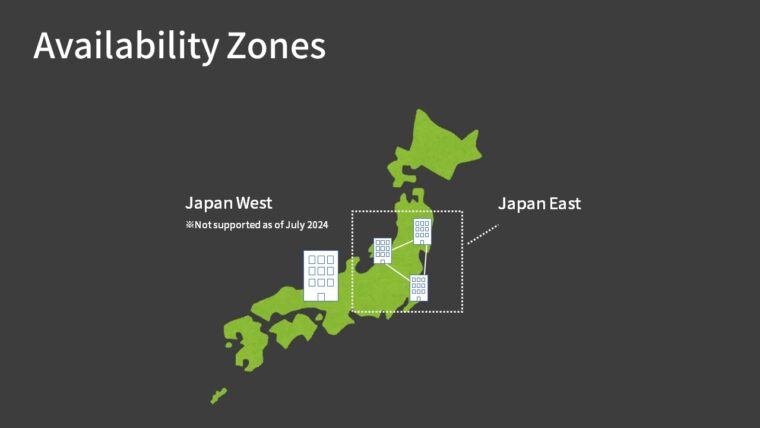
Note that availability zones are designed to protect against data center-level failures.
What is an Availability Set?
Availability sets are a mechanism for grouping virtual machines together to minimize the impact of failures and maintenance. Unlike availability zones, they can be used in all regions.
Virtual machines located in the same availability set are designed to not go down at the same time, even if there is a hardware failure or planned maintenance (applying updates).
The configuration that distributes virtual machines so that they are not all located in the same server rack is called the Fault Domain, and the configuration that controls the order in which updates are applied is called the Update Domain.
Key Points:
Fault Domain
The scope that shares power and networking equipment (= server rack)
Update Domain
The scope to which the update program is applied simultaneously.
The domain numbers are assigned so that the fault domains are 0, 1, 0, 1… and the update domains are 0, 1, 2, 3… etc.

The concept of an Availability Set is as follows.
The failure domain is a physical server rack, and the update domain is a logical group.
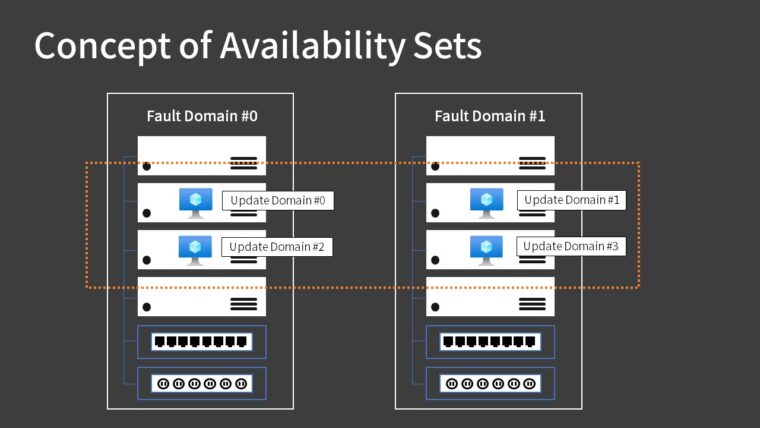
Notes:
Availability Sets are a means to achieve high availability within a datacenter and therefore cannot withstand datacenter scale failures (distributed by Availability Zones are required).
Note that Availability Sets are a means of dealing with rack-level failures within a datacenter or reboots due to the application of updates.
Special Regions
What are Sovereign Regions?
Azure has special cloud environments (regions) that can be used when building applications that meet compliance or regulatory objectives. These are called Sovereign Regions.
There are two sovereign regions.
- Azure Government
- Azure China
Azure Government
Azure Government is a region for the U.S. government.
It is a cloud environment designed specifically to meet the compliance and security requirements of the U.S. government. It is available only to U.S. federal, state, and local government agencies and their partners.
Azure China
Azure China is a region for China.
In China, it is generally not allowed for foreign cloud providers to own or operate datacenters in China, so Azure China is operated by a Chinese service provider called “21Vianet”.
The normal global Azure regions, including Japan, are operated by Microsoft, but the China region is operated by 21Vianet independently from the global Azure regions.
To use this region, you need to sign up with 21Vianet, which includes unique Chinese conditions for payment methods and inter-region connections.
Summary
In this article, we have explained Azure datacenter terminology.
If we take Japan as an example and organize it using diagrams, it would look something like this. In the case of Japan, there are only two regions, so both geo and region pairs refer to two regions, but if there are four regions in a geo, for example, two pairs of region pairs are formed. You can check the details of each geo pair in the official documentation.
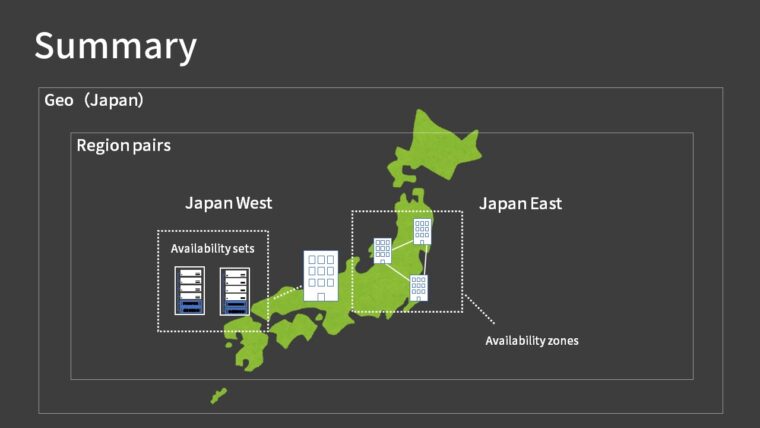
Let’s review the terms.
It is also important to remember what kind of measures can be taken for each failure.
| Term | Meaning | Mitigates |
|---|---|---|
| Geography (geo) | Group of regions in a country or area | – |
| Region | Geographical location of data centers | – |
| Region Pair | Two paired regions within a geo | Region failure |
| Availability Zone | Set of 3+ isolated data centers within a region | Data center failure |
| Availability Set | VM placement configuration within a data center | Physical failures in data center Planned maintenance |
| Sovereign Region | Special cloud environment for data location and government regulation compliance | – |

